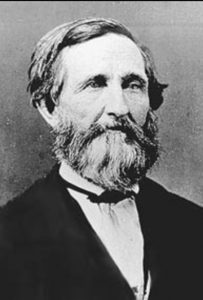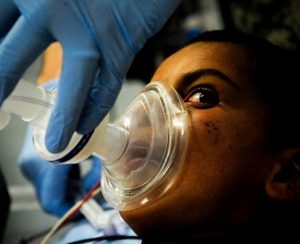 In the movies about the old west, you often see a gun fight. If someone got shot, the procedure to get the bullet out, was…well, painful. When we think of an operation, we think of a person being under anesthesia, and completely asleep during the entire procedure. In reality, prior to March 30, 1842, people who had to have an operation, had better have a strong constitution, because the best a doctor could do for them was to have them bite down on a stick. Now, this didn’t reduce the pain, but I suppose it lessened the noise level of the scream that the doctor knew was coming. I’m sure that surgery was seriously the last resort, and even often delayed longer than it should have been, simply because of the pain involved.
In the movies about the old west, you often see a gun fight. If someone got shot, the procedure to get the bullet out, was…well, painful. When we think of an operation, we think of a person being under anesthesia, and completely asleep during the entire procedure. In reality, prior to March 30, 1842, people who had to have an operation, had better have a strong constitution, because the best a doctor could do for them was to have them bite down on a stick. Now, this didn’t reduce the pain, but I suppose it lessened the noise level of the scream that the doctor knew was coming. I’m sure that surgery was seriously the last resort, and even often delayed longer than it should have been, simply because of the pain involved.
Enter, Dr Crawford Williamson Long, an American surgeon and pharmacist. Long was a bright child, graduating from the local academy at 14 years old, and continuing on to the University of Georgia in Athens. In 1835, he received his Masters Degree. Then, he began studying at Transylvania College in the fall of 1836 in Lexington, Kentucky. Long studied under Benjamin Dudley, a revered surgeon. He observed and participated in many surgeries and noted the effects of operating without anesthesia. Long transferred to the University of Pennsylvania in Philadelphia after spending only a year at Transylvania College, and was introduced to some of the most cutting edge medical technology of the time. He received his MD degree at the University of Pennsylvania in 1839.
After an 18 month internship in New York, Dr Long returned to Georgia. He took over a rural medical practice in Jefferson, Georgia in 1841. After observing the same physiological effects with Diethyl Ether that Humphry Davy had described for nitrous oxide in 1800, he used Ether for the first time on March 30, 1842 to remove a tumor from the neck of a patient, James M. Venable. He administered Sulfuric Ether on a towel and simply had the patient inhale. He performed many other surgeries using this technique over the next few years. Then, he introduced the technique to his obstetrics practice as well. Long subsequently removed a second tumor from Venable and used Ether as an anesthetic in amputations and childbirth. While Long’s use of Ether continued for quite a while, he didn’t immediately publish his findings. The results of these trials were eventually published in 1849 in The Southern Medical and Surgical Journal. It was a major advancement in surgical procedures.
 General anesthesia suppresses central nervous system activity and results in unconsciousness and total lack of sensation. Sedation suppresses the central nervous system to a lesser degree, inhibiting both anxiety and creation of long-term memories without resulting in unconsciousness. Of course, Ether is no longer used, because of the dangerous side effects, but many other types of anesthesia have been developed since Ether was used. I can’t imagine just how awful it would be to have surgery without anesthesia, and I for one am glad that it was developed. My shoulder surgery would have been horrible, if it had to be done without my arm being completely numb with a newer form of medicine that kept it numb, and me comfortable all that day.
General anesthesia suppresses central nervous system activity and results in unconsciousness and total lack of sensation. Sedation suppresses the central nervous system to a lesser degree, inhibiting both anxiety and creation of long-term memories without resulting in unconsciousness. Of course, Ether is no longer used, because of the dangerous side effects, but many other types of anesthesia have been developed since Ether was used. I can’t imagine just how awful it would be to have surgery without anesthesia, and I for one am glad that it was developed. My shoulder surgery would have been horrible, if it had to be done without my arm being completely numb with a newer form of medicine that kept it numb, and me comfortable all that day.


Leave a Reply